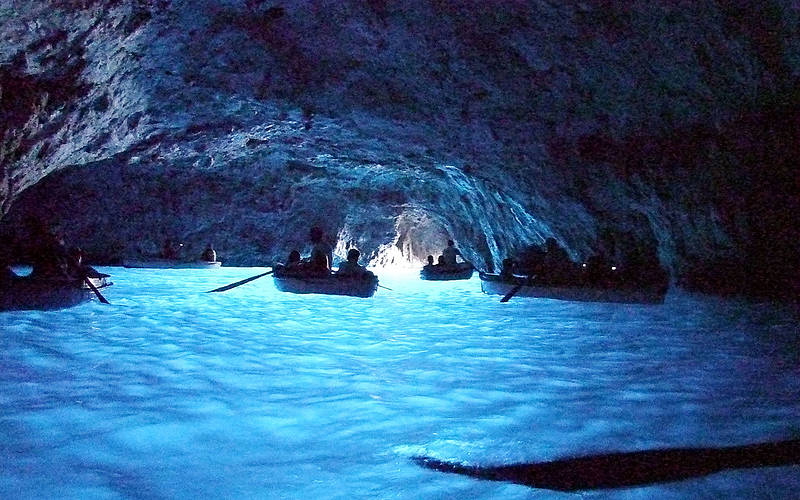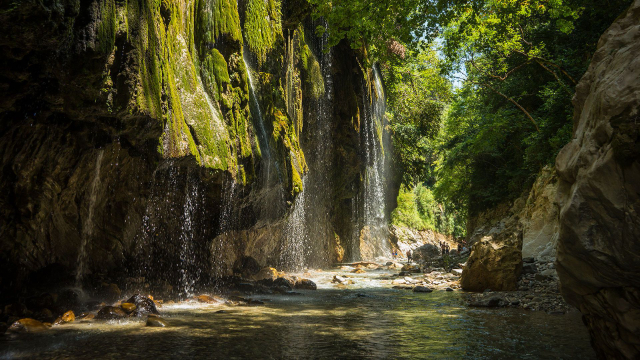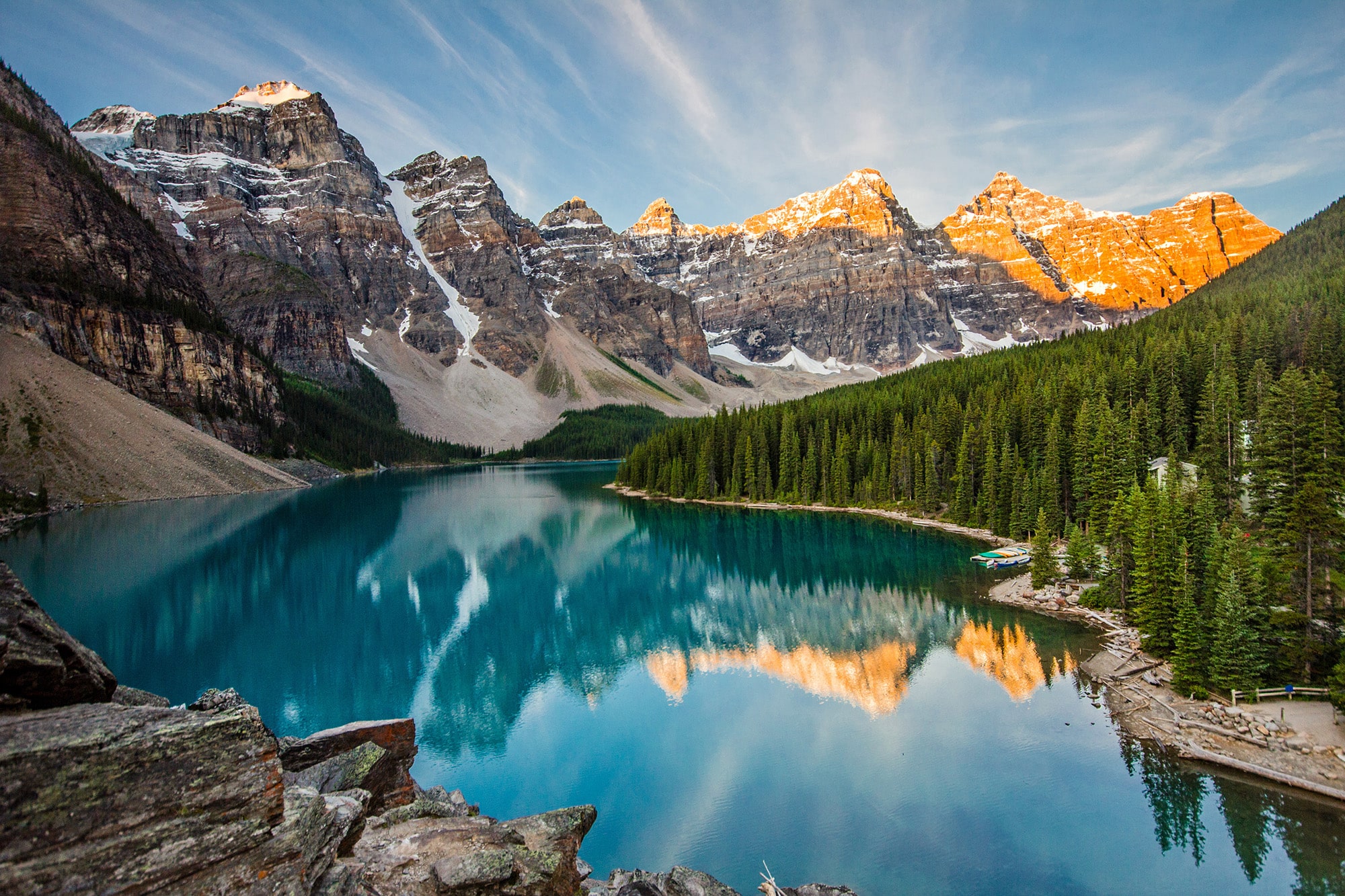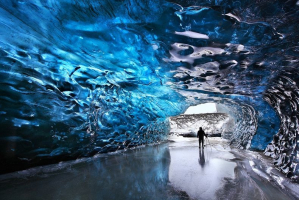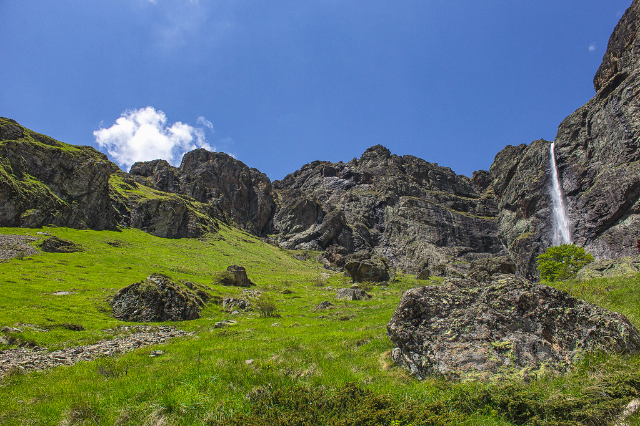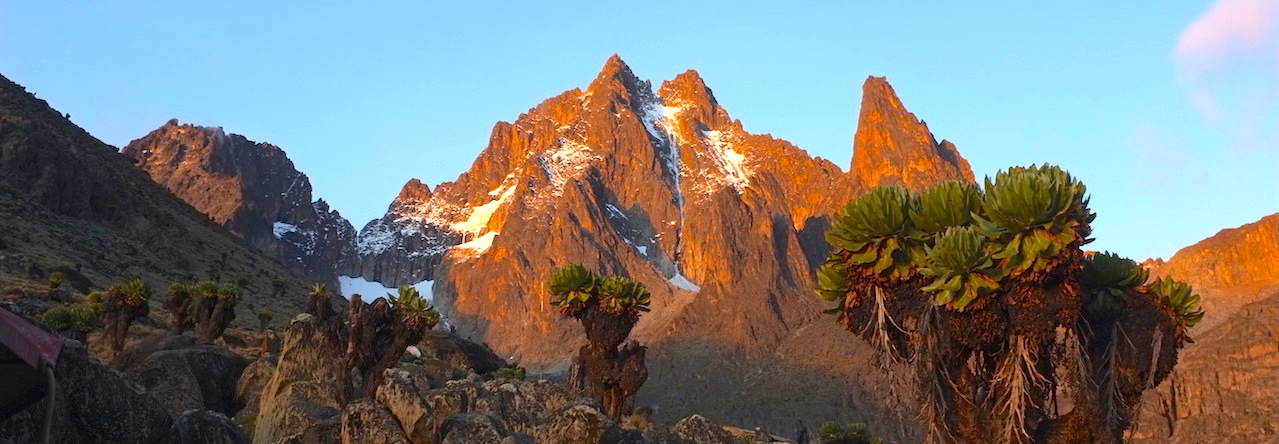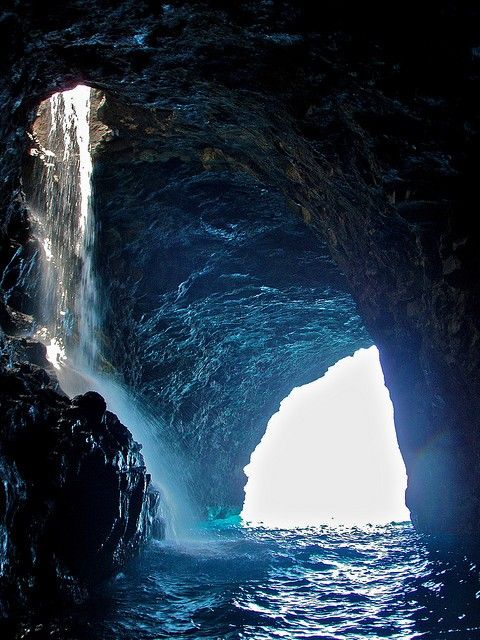The Blue Grotto owes not its discovery but its revelation to the romantic passion of two German tourists who visited Capri in 1826: a writer, Augusto Kopisch, and a painter, Ernesto Fries.
But the Grotto was already known to the people of Capri by the name of "Grotta di Gradola," from the nearby ancient port of Gràdola and Gradelle, although, due not so much to its narrow entrance as to the legends of witches and monsters that populated it, it was shunned as a magical and scary place. However, giving due credit to the daring of the two German travelers, to the fisherman Angelo Ferraro known as the "Riccio" who guided them, to the notary Giuseppe Pagano who corroborated them with Latin quotations and good wine, and to the donkey-maker who loaded the vats, the Greek fire and whatever was needed for the exploration, the main merit was that of having given it a new first name: Grotta Azzurra, a name that was to resolve itself, and did resolve itself, into a series of countless enthusiastic and more or less dithyrambic descriptions, colorful lithographs, and postcards that ended up dyeing all exhibitions of Capri memories blue.
What is certain is that a fortunate coincidence of geological and speleological conditions created the double spell of the cave. The sinking in geological age of a cavern 15 to 20 meters below the present sea level and the occlusion of every other direct source of light except that of the narrow entrance pertube, have served to give the cavity of the speco and the basin of water enclosed in it, a different magical color. On the one hand, the sunlight, penetrating underwater through the veil of seawater, breaks out and refracts blue-colored on the walls and on the speco vault: on the other, refracting on the white, sandy bottom of the cave, it gives the water a strange opalescence, so that the bodies that immerse themselves in it become imbued, at every vibration, with silvery light.
Even to the earliest explorers it appeared clear that the Romans not only knew of the Blue Grotto, but had made it the object of special research, the true nature of which, moreover, was unknown. It is necessary to add that, discarding the hypothesis that a sinking of 6 or 7 meters occurred from the Roman age to the present, the conditions were at the time of Augustus and Tiberius the same as today. And a careful examination of the traces of Roman work inside and ancient buildings outside can help us understand what the "Blue Grotto" was for the Romans.
Few visitors amidst the spell of light and the brevity of time afforded by the throng of tourists, realize that along the wall opposite the entrance hole, the Grotto extends into a rocky cavity elevated a little more than a meter above the water level, and that that cavity is accessed by a small landing stage covered with Roman cement work, while in the rock wall opens, opposite the entrance, a square, window-like chamber, accessible by a step cut evidently by the hand of man.
The rocky step and the square compartment seem to have been made for good measure to provide a way to disembark and contemplate restfully from the ground that divine and terse cup of blue. Instead, the rocky cavity extends into the bowels of the mountain in an increasingly narrow and tortuous tunnel, within which the splinters piled up on the sides suggest that, opened by the Romans to search for a vein of water, it was that tunnel abandoned after a laborious and fruitless exploration.
Above and outside the Cave, on the last step of the mountain, are the ruins of a small Roman villa (the villa of Gràdola or Gradelle) with several rooms and some cisterns, similar in shape and structure to the other villas of the Augustan-Tiberian period.
Therefore, the Romans not only knew the "Blue Cave" and probably owe to them the narrow fissure through which it is possible to penetrate it today, but by building a small villa above it, they wanted to make the visit more comfortable and restful in a place that still appears impervious and wild and without shelter even for small boats.
In addition to this they tried, unsuccessfully, to capture a few veins of water to create one of those fish nurseries that were fed by doce and sea water.
But since the "Blue Grotto" and the villa of Gràdola are subject to the grandiose "Villa of Damecuta" which overlooks the promontory of Arcèra, it is obvious to assume that the Grotto with its slipway of Gràdola and the Villa of Damecuta above formed a single complex in which the "Blue Grotto" the model from which the Romans were inspired in the imprinting and decoration of the island’s other rock nymphaeums, imitating with the mosaic covering of the walls and vaults, the inimitable color of that speco that was the natural home of Glaucus and his blue-haired procession of Nereids.
(Taken from "History and Monuments" by Amedeo Maiuri)
